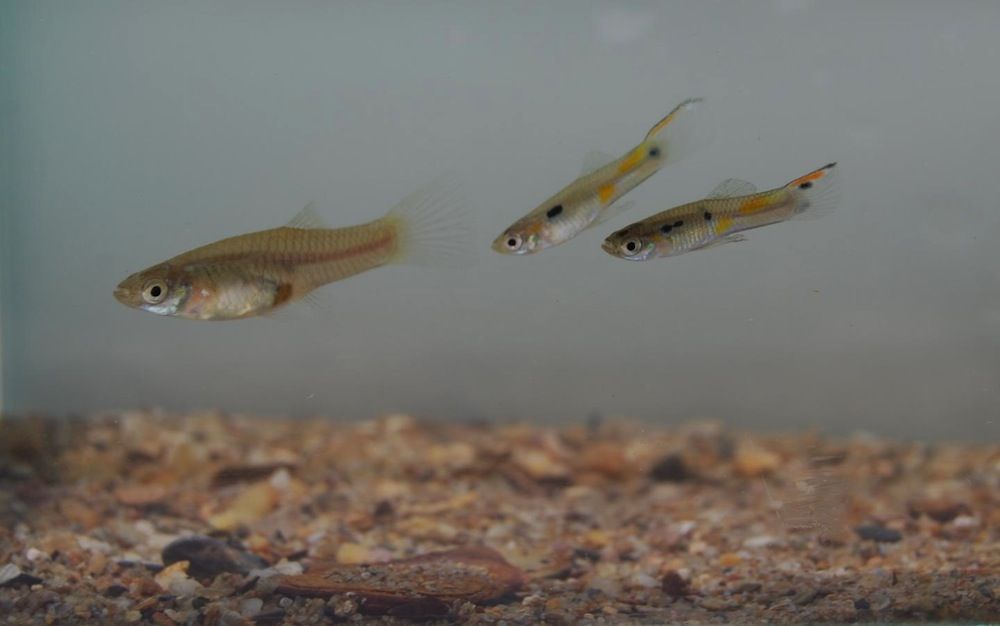Sexual Harassment in the Animal Kingdom? How Female Guppies Escape

When boy guppies pester the girls they like, it can actually make the female fish better at swimming away, a new study finds. Animal-behavior scientists discovered that female fish who were most bothered by this type of sexual harassment started to swim in a different, more efficient way.
Male guppies will chase and sometimes even attack females to get them to mate, the researchers said. This type of behavior is considered harassment in the animal world, and females can expend a lot of energy avoiding unwanted overtures.
Researchers from the University of Glasgow and the University of Exeter, both in the United Kingdom, tested the effects of this harassment on Poecilia reticulata guppies. [Photos: The Freakiest-Looking Fish]
"In the wild, especially during the dry season, [guppies] can be trapped together in small pools for months," said study lead author Shaun Killen, a biologist at the University of Glasgow. "Females will be exposed to this continual harassment by the males and so they're forced into swimming all over the place."
The team subjected female guppies to different levels of harassment by males over five months. Then, they measured the guppies’ swimming speed and how much oxygen they used by putting them in a “treadmill for fish."
The fish were placed in a small, submerged water tunnel where they can swim at different speeds and their oxygen consumption can be measured. The process is similar to when sports scientists monitor someone working out on a stationary bike with a mask on to measure their oxygen uptake.
The females that were exposed to higher levels of harassment by the males used less oxygen to swim at a particular speed compared with the fish that had not been hassled so much. The team found that the females' swimming techniques were also different when they were bothered more. The harassed fish used their pectoral fins to help them swim away, the researchers said, which is a more efficient way of moving and something that the nonharassed females didn’t do.
Sign up for the Live Science daily newsletter now
Get the world’s most fascinating discoveries delivered straight to your inbox.
The researchers said that changing their swimming technique gives the female guppies more control over who they mate with.
"It's easier to swim away from ones that they don't like," Killen told Live Science. "If they're able to do that while using less energy, that's a pretty big benefit for them as well."
Swimming more efficiently sounds like an advantage overall, but Killen said it’s not that simple.
"If [the female fish are] capable of being more efficient, why don't they do it all the time anyway?" he said. "That suggests that there are costs as well."
In other words, it takes an investment of time and energy for the females to achieve an efficient level of swimming to escape the males’ advances. Killen thinks the guppies use extra energy to reach that point of efficiency, but so far, it's not known if the spent energy has any negative effects on the fish.
The results of the study show that swimming more efficiently is something that the fish have to learn and practice, according to the researchers. Killen said it’s similar to a runner assuming a different posture to move faster.
Next, the researchers want to test the biochemical effects of the male guppies' sexual harassment on the females. By looking at their mitochondria and aerobic enzymes, the scientists hope to find out whether the female fish are being affected at a cellular level.
The new study was published online Aug. 24 in the journal Functional Ecology.
Follow Live Science @livescience, Facebook & Google+. Original article on Live Science.













